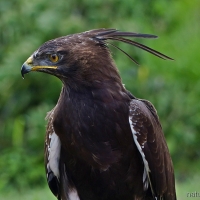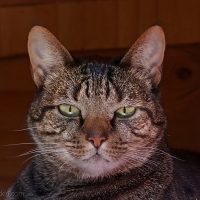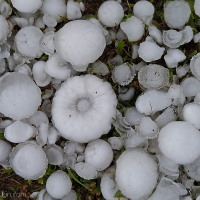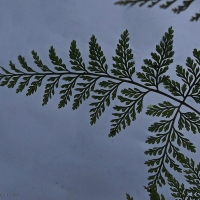Today is Earth Day and the theme for 2021 is Restore Our Earth. Three days (20-23 April 2021) of live streaming events connected to the Earth Day campaign can be found here. In this post I highlight South Africa’s major biomes to draw attention to the diversity that, although diminishing, we still have.
All South Africa’s biomes are under threat in multiple ways and it seems fitting to honour what we still have as a reminder that much needs to be done to restore and protect them.

Transformed by urbanization, this tract of land (near the coast in the southern Western Cape province) is denuded of its natural vegetation diversity and is contaminated with discarded waste
A biome can be defined as being “a large community of vegetation and wildlife adapted to a specific climate”. Globally, the five major types of biomes are aquatic, grassland, forest, desert and tundra (nationalgeographic.org). Although there are different ways of classifying biomes with some systems being more or less broad than others, all biomes are determined by climate (rainfall and temperature), and affected by other factors that include geography (latitude and longitude) and local attributes such as mountain barriers, altitude, surface water and soil types.
In South Africa, in addition to freshwater and marine biomes, nine terrestrial biomes are recognised: Grassland, Savanna, Forest, Fynbos, Succulent Karoo, Nama-Karoo, Albany Thicket, Indian Ocean Coastal Belt and Desert (http://pza.sanbi.org/vegetation).

With grassland pictured in front of a patch of mistbelt forest, the KwaZulu-Natal Midlands landscape beyond is highly modified by human activity, and includes tree plantations, farmlands and artificial dams
Biomes are not necessarily discrete entities and there may be transitional areas between different zones. Biomes may be extremely localized because of specific conditions – for example, small forest patches can occur within grassland biomes.
Within a classified biome there are various and distinct vegetation types. Forests, for example, can be montane, scarp, mistbelt, sand, coastal, lowland riverine and so on.

A patch of natural forest in the KwaZulu-Natal Midlands
In South Africa forests occur mostly in relatively small patches within other biomes. Forests require sufficient rainfall and protection from fire. In total, forest covers only 0.1 % of the land surface in South Africa, and less than 0.25% of the broader southern African region, being the smallest biome in the African subcontinent.
The largest biome in the region is the Savanna biome covering over one-third of the land in South Africa and 46% in southern Africa, including in Botswana, Namibia and Zimbabwe. Savanna has a grassy ground layer and an upper layer of woody plants, ranging from Shrubveld through the more intermediate Bushveld to Woodland.

A giraffe strolls through Acacia Savanna at Mkhuze Game Reserve in KwaZulu-Natal. This photo was taken in an unusually green summer prior to several years of severe drought across the region
Savanna grasses require summer rainfall. Most Savanna grasses and plants can regenerate after fire. The Savanna biome accommodates the widespread farming of grazing livestock. For a map of the southern African Savanna biome see here.

A small group of cattle is herded along a road in an Acacia Savanna area neighbouring Mkhuze Game Reserve. Many homesteaders are highly dependent on small-scale vegetable and livestock farming for subsistence in under-resourced rural communities with high levels of unemployment
Another biome of significant size in South Africa is the Grassland biome. It is widely exploited for the purposes of beef, dairy and wool production and grasslands have been significantly replaced with maize and other crops such as sorghum, wheat and sunflowers. Consequently the rich biodiversity of grasslands has been significantly diminished. For a map of the South African Grassland biome see here.

Early summer wild flowers in grassland in the KwaZulu-Natal Midlands

Farming in the Grassland biome near Harrismith in KwaZulu-Natal. I took this photo from the car while travelling on the N3 freeway
The second largest biome in South Africa is the Nama-Karoo biome that occurs on the central plateau in the western part of the country. For a map see here.

The low scrubby vegetation typical of the Nama-Karoo biome seen here in the Karoo National Park
The Nama-Karoo biome is a semi-desert arid region with low summer rainfall where the limey soil is shallow and poorly developed. The large herds of springbok and other wild animals are long gone, and now the region sustains sheep and goat farming where overgrazing can be a problem on fragile lands.

When one takes a more micro view of the Nama-Karoo vegetation the diversity to be discovered is staggering
Further west than the Nama-Karoo biome is the Succulent Karoo biome. Although soil types are similar in the two biomes the rainfall patterns are significantly different. Whereas the Nama-Karoo has low and variable summer rainfall, the Succulent-Karoo is determined by very low winter rainfall and arid summers. For a map of the Succulent Karoo biome see here.

A spring-flowering succulent ‘vygie’ at Gamkaberg Nature Reserve in the Little Karoo region of the Western Cape
Some areas, such as the Ai-Ais Richtersveld Transfrontier Park, are situated in the transitional zone between summer and winter rainfall regions and so plants from different biomes may intermingle. Adding to the complexity is that the mountain ranges have an effect on the meagre rain that does fall, so that seaward-facing slopes (even though inland) receive more precipitation than inland-facing slopes. Resulting microclimates and other conditions can be so specific that some plants are endemic to very narrow locations.

Given the complexities of climate patterns at the Ai-Ais Richtersveld Transfrontier Park, I cannot be sure but I am guessing that the vegetation in the above photo is in a transitional zone between the Succulent Karoo and Nama-Karoo biomes

Whatever the vegetation types, the rugged landscapes of the arid Ai-Ais Richtersveld Transfrontier Park are spectacular
Although vast areas of South Africa are arid and classed as semi-desert, only a small section in the north-western part of the Ai-Ais Richtersveld Transfrontier Park is classed as true desert. This desert area is in the Gariep (Orange) River Valley in the Springbokvlakte area on the border with Namibia. See the map here. Most true desert in southern Africa is in Namibia – but that will have to wait for another post.
The biome unique to South Africa that is perhaps best known is the Fynbos biome, which includes both the true Fynbos and the Renosterveld vegetation types. Fynbos plants occur in a small area in the south western part of the Western Cape province, yet they are incredibly numerous and diverse. For a map see here. It is estimated that 7000 species of plants occur in the Fynbos vegetation type and 1000 in the Renosterveld type.

A glimpse of some typical Fynbos vegetation
Threats to the Fynbos biome include urbanisation and development (Cape Town and major coastal resorts occur in the Fynbos biome). Other threats include fertiliser use, expansion of crops, invasive alien plants and fire. Although Fynbos is fire adapted, fires in the wrong season (for example spring instead of late summer) and too frequently so that plants cannot set seed result in the elimination of plants. Fire in the Fynbos biome is a hot topic currently following the recent fires on Table Mountain that caused widespread damage, including to the University of Cape Town’s Jagger Library and the destruction of thousands of items in its African Studies Collection.

Another example of plants and flowers in the Fynbos biome
The Albany Thicket biome – also known as Subtropical Thicket – comprises several thicket types including Spekboom thicket, and it is characteristic of many parts of the Eastern Cape. For a map see here.

Two klipspringers hiding in thicket at the Gamkaberg Nature Reserve

Elephants feeding in thicket at the Addo Elephant National Park
The ninth terrestrial biome in South Africa that I just touch on here is the Indian Ocean Coastal Belt biome, which stretches 800 km down the coast from the border with Mozambique to the Kei River mouth in the Eastern Cape. See map here.

Part of the Maputaland Coastal Belt in northern Zululand in KwaZulu-Natal, coastal vegetation can be seen inland of the Kosi Bay estuary with vegetated dunes forming a barrier between the estuary and the ocean
The coastal vegetation is a mosaic of open grassland often dotted with small trees, including palms, and forest, woodland and wetland vegetation. The coastal plain is sandy with coastal dunes being a feature along sections of the coast.

Nguni cattle grazing on grasses in the Maputaland Coastal Belt that forms part of the Indian Ocean Coastal Belt
I had thought to include the aquatic biomes in this post, but I will hold that over for another post. Highlighting the nine terrestrial biomes in South Africa that all require protection and differing degrees of restoration seems a fitting way of acknowledging Earth Day.
The Earth Day organisation details Five Pillars to protect our Earth that it has delineated to form its 2021 campaign. They are:
The Canopy Project. Planting trees and reforestation. https://www.earthday.org/campaign/the-canopy-project/
Food and Environment. Reduce your foodprint. https://www.earthday.org/campaign/foodprints-for-future/
The Great Global Cleanup. Join a group to cleanup waste, start a group, pick up waste as part of daily life. And help reduce the waste produced. https://cleanup.earthday.org/
Climate Literacy. Spreading the word through education and information. https://www.earthday.org/campaign/climate-environmental-literacy/
Global Earth Challenge. Join a citizen science initiative. https://www.earthday.org/campaign/climate-environmental-literacy/
Also included in the Earth Day campaign’s list of suggested actions that we may choose to play a role in, is to plant a pollinator garden (https://www.earthday.org/actions/plant-a-pollinator-garden/).
And on the subject of planting for pollinators, I was astounded to read in Nancy Lawson’s Humane Gardener blog her most recent post titled ‘Butterflies:1 Bullies:0’ in which she describes how a homeowner’s association (HOA) in Maryland in the US had been demanding that specific homeowners under their jurisdiction remove their pollinator garden that had been flourishing and treasured for 18 years. By removing the garden the HOA demanded that the homeowners rip out all the plants and flower beds and replace them with turf grass, i.e. lawn. The HOA spent thousands of dollars in legal fees while making these bizarre demands.
The homeowners (Nancy Lawson’s sister and her husband) decided to fight back, and after an ongoing saga over three difficult years the heartening outcome is a House Bill recently passed by the Maryland General Assembly codifying the right for gardeners in developments controlled by HOAs to be wildlife-friendly, plant-friendly and environmentally conscious. To read this astonishing tale, see https://www.humanegardener.com/butterflies-1-hoa-bullies-0/
Sources:
Boon, Richard. 2010 (2nd ed.). Pooley’s Trees of Eastern South Africa. Durban: Flora & Fauna.
Earthday.org. 2021. Earth Day 2021: Three Days of Climate Action. https://www.earthday.org/earth-day-2021/
SANBI. [n.d.] Vegetation of SA, South African National Biodiversity Institute (SANBI). http://pza.sanbi.org/vegetation
Siyavula. [n.d.] Biomes. Siyavula Technology-Powered Learning. https://intl.siyavula.com/read/science/grade-10-lifesciences/biosphere-to-ecosystems/08-biosphere-to-ecosystems-03
Posted by Carol









May 10, 2021 at 2:26 am
So much to grasp here. It’s pretty disgusting to see the neglect and abuse that our habitats are suffering. I also found the link about the legal battle to allow pollinator gardens to be disturbing. We once looked into a home in a gated community until I read the restrictions. The one that floored me was not allowing clothes lines to hang laundry out to dry! There is NOTHING under the sun to match that fresh scent of sun dried sheets. I just don’t understand such back-assward thinking one bit!
LikeLiked by 1 person
May 11, 2021 at 8:22 pm
Yes the story about restrictions preventing pollinator gardens was disturbing. I agree about the restrictions in some gated communities being bizarre and/or outdated – not allowing washing lines being a good example. I can never understand why some folks have such issues with washing hung on lines being somehow offensive. And yet it seems many tourists to Mediterranean countries love to take photos of ‘picturesque’ washing strung across streets and outside buildings!
LikeLike
May 1, 2021 at 2:50 pm
Ahhhhh, this Earth Day tribute was, as always with your posts Carol, a complete joy. I found your presentation of South Africa’s biomes very interesting. Although I am familiar with the major biomes of North America, I found your biomes fascinatingly different. This was a big topic and you did a fantastic job of staying focused and providing us with facts and photos. The immense variety of habitats here is so rich, and yet, as you pointed out, there is always much to do to maintain and sustain it all. I just enjoyed the marine biome post that you presented following this post, and enjoyed that so very much too. Also enjoyed the outrageous post script story and link about the Maryland legal battle to allow pollinator gardens. Happy Earth Day to you, and my warmest thanks to you for making every day be an earth day.
LikeLiked by 1 person
May 3, 2021 at 6:13 pm
Thanks for your Happy Earth Day good wishes Jet, and the same to you too. I know that you also appreciate our Earth everyday.
I found it interesting to look at the country based on its biomes and to understand how the terrestrial biomes are controlled by climate. The consequences of climate change are and will be more profound than many of us realise …
Yes that Maryland case was outrageous and kudos to those who took the case up and successfully too.
LikeLiked by 1 person
April 29, 2021 at 2:33 pm
Thank you for sharing this information and for the pleasure of looking at your beautiful photograph. I have to confess that the Albany Thicket is probably my favourite biome
LikeLike
April 27, 2021 at 4:33 pm
Thank you so much for this super interesting post. I am from Europe but I am passionate about South Africa and reading your article provided me with lots of valuable information regarding the different biomes. Thank you for putting such an informative piece together! Marcella
LikeLiked by 1 person
April 29, 2021 at 9:41 am
Thanks so much Marcella. I am so pleased that you found this post useful and delighted that you are passionate about South Africa. Lovely to be in touch!
LikeLiked by 1 person
April 24, 2021 at 10:01 am
This is so interesting, Carol. Such diversity, highlighting the fragility and yet robustness in nature. And of course, the impact of human activity, ever-present….
LikeLiked by 1 person
April 25, 2021 at 8:24 pm
Thanks Sandra. As the climate changes biomes are shifting with many under enormous threat. Let us hope more can be done to mitigate such profound changes,
LikeLiked by 1 person
April 24, 2021 at 8:03 am
This post highlights how much diversity still exists, as well as how precarious some of that diversity is, and how much it needs our protection. And how everyone needs to play their part, wherever they live and whatever their own habitat. A thought provoking, sober post.
LikeLiked by 1 person
April 25, 2021 at 8:16 pm
Thanks Margaret. I hadn’t anticipated when I started writing the post that it would be so sobering but it turned out that way. The precarious state of all the biomes is really brought home with the understanding that biomes are determined largely by climate, and so the changes that the climate crisis is unleashing are so fundamental.
LikeLiked by 1 person
April 23, 2021 at 1:47 pm
Of all the things that really made me mad… and sad is littering; that complete disregard of one’s immediate surroundings in the way litter is simply thrown away.
The council were topping trees on a couple of streets in Obs where I live and there were piles of branches and wotnot on the verges awaiting removal from (I presume) Pikitup.
Among the leaves were empty bottles, Kentucky packets and other assorted crap.
While walking the dog I even called back one bloke after he had thrown away a coke can on a pile of branches and pointed out to him the waste bin not twenty yards long the path!
He returned to pick it up but not after giving me hate looks and moaning profusely that the council would clear it up in any case.
How does one deal with this sort of mentality?
And you find this type of careless method of waste disposal is notably prevalent along Taxi routes, especially where they stop for passengers to disembark.
It drives me spare!
LikeLiked by 1 person
April 23, 2021 at 7:46 pm
That attitude that others will pick it up seems to be so pervasive, and of course that is not the point. However, it is even worse when services to clear litter and rubbish are breaking down. Such services in our city are breaking down and downtown piles of rubbish and litter, flooded and blocked drains, broken pavements and overgrown gutters and sidewalks are left unattended. Not sure what the solution is.
LikeLike
April 23, 2021 at 6:18 am
A most informative post and great photos to go with it. Also loved the story about the homeowner’s association. What a sad group of people. Reminded me of someone I visited who was in trouble for using the wrong colored gravel in his yard!
LikeLiked by 1 person
April 23, 2021 at 7:36 pm
Thanks Graham. I was astounded at the small mindedness of the homeowners association and now you mention the wrong coloured gravel! (I can’t help wondering if the folks who refuse to wear face masks to mitigate against transmission of Covid are demographically the same as those who insist on turf grass and gravel uniformity or not.)
LikeLiked by 1 person
April 24, 2021 at 6:02 am
Some probably are the same people, and they wouldn’t see the irony. I don;t think I could live in a place with a homeowners association. It would likely end badly.
LikeLiked by 1 person
April 25, 2021 at 8:07 pm
Indeed would be an (asymmetrical) irony there for those who see it. I also would not cope well with being bound by HOA rules and regulations.
LikeLiked by 1 person
April 23, 2021 at 4:49 am
What an absorbing and pertinent read. You have provided a wonderful – and well illustrated – overview of our precious landscape. Right now, the Albany Thicket biome could do with some soaking rain. Even the 4mm received on Earth Day has perked up the leaves of the indigenous trees – thus gratefully received.
LikeLiked by 1 person
April 23, 2021 at 7:30 pm
Thanks Anne. Glad to hear that you have had some rain – 4 mm is better than nothing but let’s hope for some more …
LikeLike
April 23, 2021 at 4:06 am
Wonderful Earth Day post, Carol!
LikeLiked by 1 person
April 23, 2021 at 7:28 pm
Thanks so much Sandy.
LikeLiked by 1 person
April 23, 2021 at 7:50 pm
Welcome!
LikeLiked by 1 person
April 23, 2021 at 3:43 am
Now I really, really need to get out of the city!
South Africa is so richly endowed with natural beauty and diversity. Great celebration this, Carol.
LikeLiked by 1 person
April 23, 2021 at 7:28 pm
Thanks. We are very fortunate to have all this natural beauty within reach.
LikeLiked by 1 person
April 23, 2021 at 2:11 am
Dear Carol, your beautiful post is so apt for Earth Day, reminding us of the varied diversity of biomes we are still fortunate to have here in South Africa. Although all are under severe threat as our population continues to increase, we can only hope awareness will help to maintain them. xxx
LikeLiked by 1 person
April 23, 2021 at 7:27 pm
Thanks Christeen. We are fortunate in the amazing diversity we have around us.
LikeLiked by 1 person
April 23, 2021 at 12:03 am
I enjoyed reading your post very much, Carol, learning about the different habitats/biomes in SA. Great links, too, thanks much!
LikeLiked by 1 person
April 23, 2021 at 7:26 pm
Thanks Eliza. Glad you found the links interesting too.
LikeLike